#austrian empire
Explore tagged Tumblr posts
Text






"...the Austrian army ... carried most of the burden of the war on land. Though repeatedly defeated, it always rose again..."
Just some more Austrian Empire uniforms.
From "The Austro-Hungarian Army of the Napoleonic Wars"
#history#military art#military#1800s#napoleonic era#napoleonic wars#soldier#cavalry#napoleon#austrian empire#austrian history#francis ii#osterreich#austrian uniform#Austrian Napoleonic history
55 notes
·
View notes
Text

Third Battle of Komárom (11 July, 1849) by Albrecht Adam
#albrecht adam#art#third battle of komárom#hungary#austria#russia#hungarian revolution of 1848#revolutions of 1848#austrian#russian#hungarian#battlefield#soldiers#troops#austrian empire#russian empire#komárom#empire of austria#habsburgs#habsburg
35 notes
·
View notes
Text

Holy Roman Emperor Charles VI (1685-1740), When Archduke Charles
Artist: Sir Godfrey Kneller (German-born British, 1646-1723)
Date: c. 1704-1705
Medium: Oil on canvas
Collection: Royal Collection Trust, London, United Kingdom
Description
Charles VI (German: Karl; Latin: Carolus; 1 October 1685 – 20 October 1740) was Holy Roman Emperor and ruler of the Austrian Habsburg monarchy from 1711 until his death, succeeding his elder brother, Joseph I. He unsuccessfully claimed the throne of Spain following the death of his relative, Charles II. In 1708, he married Elisabeth Christine of Brunswick-Wolfenbüttel, by whom he had his four children: Leopold Johann (who died in infancy), Maria Theresa, Maria Anna (Governess of the Austrian Netherlands), and Maria Amalia (who also died in infancy).
This portrait was probably painted in the Winter of 1703-4 when the sitter was in England prior to his sailing for Spain with a Royal Naval escort. After the death of Charles II of Spain (1661-1700) the Archduke Charles was Britain's favoured candidate to succeed him in order to prevent a Bourbon claimant that would effectively unite the Spanish and French thrones. In 1711 the Archduke Charles inherited the Holy Roman Empire and was crowned Charles VI; his candidature thus threatened a unification of the German and Spanish crowns, an outcome deemed by the British to be equally disruptive. After this British enthusiasm for the whole matter cooled.
#portrait#full length#oil on canvas#painting#charles vi#holy roman emperor#artwork#oil painting#fine art#armour#collar of the golden fleece#baton#crown#warship vessel#austrian habsburg monarchy#austrian empire#holy roman empire#british culture#british art#sir godfrey kneller#british painter#european art#18th century painting#royal collection trust
17 notes
·
View notes
Text
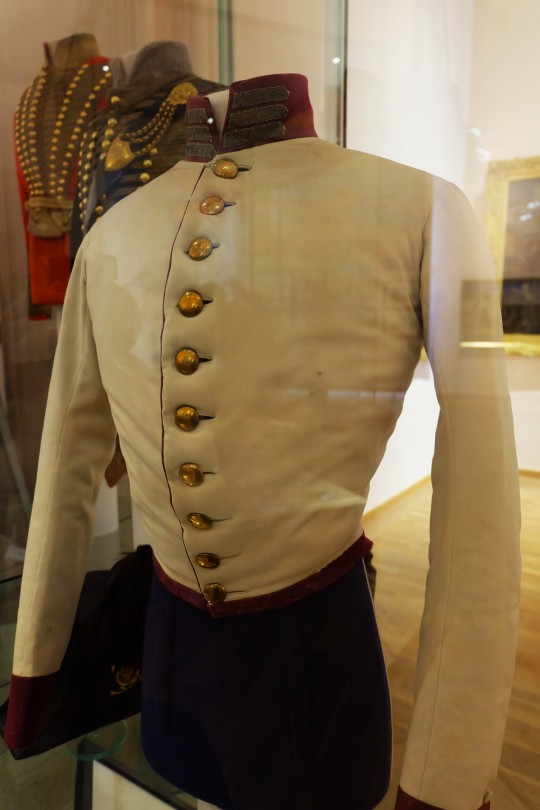
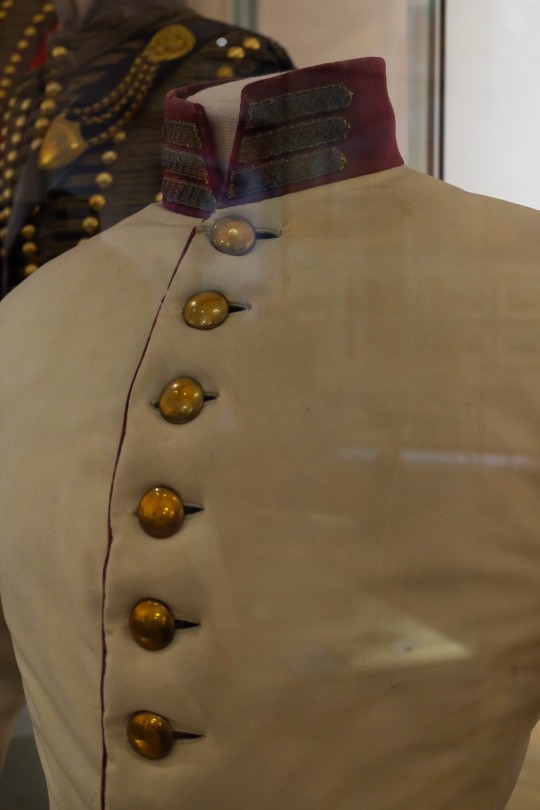
Captain's Uniform of the Chevauxleger Regiment No. 6 from the Austrian Empire dated from 1848 on display at the Heeresgeschichtliches Museum in Vienna, Austria
Photographs taken by myself 2022
#uniform#fashion#hapsburgs#military history#19th century#austria#austrian#austrian empire#cavlary#heeresgeschichtliches museum#vienna#barbucomedie
67 notes
·
View notes
Text

Tomb of Kaiser Karl VI. The rulers of the Austrian empire were all entombed in elaborate sarcophagi like the one above in a crypt in a Capuchin monastery.
Vienna, Austria
Feb. 2023
#tombs of the dead and famous#sarcophogus#austrian empire#cemetery#tomb#original photography#photography#taphophile#taphophilia#lensblr#photographers on tumblr#tombs#Kapuzinergruft#austria#vienna#wien#wanderingjana
9 notes
·
View notes
Text

1904 Austrian postcard of the market square in Busk, Ukraine.
#ukrainian history#austrian empire#old postcard#vintage ukraine#vintage postcard#early 20th century#ukraine#postcard#1900s#1904#busk
29 notes
·
View notes
Text
Huge shout-out to my friend who lets me indulge my hyperfixations and somehow managed to track down a photo of my old high school history notes on the French revolution??

Some higlights!
Headline: The Impact of the French Revolution (on the Czech Lands) (which was part of the Austrian Empire back then, making it just a bit more spicy)
After the fall of the Bastille in 1780, the revolution gains traction, making Austrian authorities uneasy
Leopold II. (Austrian emperor) knows it is important to filter the news getting to Austria from France
The news about the revolution are apparently more censored in Czech-language newspaper than the German ones, since the Czechs were known to rebel against authorities (kind of a "don't want to give them any ideas" type of situation") -> this meant that Czechs who spoke German would have had better access to the news about the French Revolution
The French Revolution would have more support in the Czech intellectual circles, compared to the countryside
a first disinformation campaign was launched in the Austrian newspaper, focused on making the French Revolution look as bad as possible (designed to protect the "traditional regime = the right solution" narrative)
This was contrasted with the experiences of real French people brought to the Czech lands by French soldiers (e. g. during the Napoleonic Wars - the Battle of Austerlitz, arguably the most important battle on our territory)
it also says that the French army was apparently viewed largely positively by Czech people and that the soldiers generally behaved quite decently? (I guess there's a really low bar for a behaviour of a foreign army but still. This surprised me, definitely not something I remembered from my class!)
After the ideas of the French Revolution spread to our country, it influenced the intellectual climate and made people rethink the status quo under the Austrian rule
last point (in all caps for some reason lol): FIRST RECORDER TIME IN WHICH THE STATE USED A DISINFORMATION CAMPAIGN, trying to paint France in a bad light
you also get to witness my horrible handwriting I guess~
#history#historiography#french revolution#history analysis#frev#frev community#frevblr#czech history#čumblr#1700s#18th century#19th century#napoleonic wars#austrian empire#history lesson#history tumblr#also side note I don't have the sources for all of information apart from my former history teacher#but I can always fact-check if anyone's interested#also I know it's appeal to authority and whatnot but she genuinely was the best#long post
20 notes
·
View notes
Text
Fancy Austrian Empire sketch, aw yeah 👍

8 notes
·
View notes
Text


The austrian tragedy
The day after the tragedy, Elisabeth and Franz Joseph learned from their personal physician that their son Rudolf and his lover Mary had been shot in the head. Mary lay on the bed with a rose between her hands, while Rudolf was beside her with a revolver on the floor. Devastated, Elisabeth exclaimed that "Great Jehovah is terrible as He marches onward sowing destruction like a storm." That night at dinner, she lost her composure and sobbed in front of Rudolf’s widow, Stéphanie, and their five-year-old daughter, Elisabeth. Later, she blamed Stéphanie, saying that if Rudolf had had a different wife who understood him, things might have turned out otherwise.
A few days after Rudolf’s burial, Elisabeth attempted to contact his spirit in the crypt to uncover the reasons for his suicide, but she failed. This fueled more gossip in Vienna and marked a breaking point in her faith, as she confessed to her daughter Marie Valerie: "Rudolf’s bullet killed my faith." From then on, she envied her son’s death and longed for her own, giving away all her light-colored gowns and wearing only mourning attire for the rest of her life.
“Mama will probably never again be as she was at one time; she envies Rudolf his death, and day and night longes for her own.”
Initially, Elisabeth informed Marie Valerie, who assumed Rudolf had taken his own life, though Elisabeth resisted this, suggesting Mary had poisoned him. When she told Stéphanie, the latter faced a painful interrogation from the emperors, feeling judged as an unfaithful wife. Though Elisabeth remained composed in the days following her son’s death, she soon fell apart, consumed by self-reproach and attributing Rudolf’s "mental confusion" to the Wittelsbach bloodline. This drew criticism from the court, where she was blamed for neglecting her duties, with some asserting that her selfishness contributed to the catastrophe.
“This time, the empress of this land bears the main blame. If she had thought less about herself and more about her duties, this recent catastrophe would not have occurred.” - Countess of Jonghe.
Source: The Reluctant Empress by Birgitte Hamann & History of Royal women
#elisabeth of austria#empress sissi#Rudolf crown Prince#franz joseph#austria#austrian empire#house of habsburg#habsburg dynasty#tragedy#politics#history#foryou#marie valerie#habsburg empire#19th century
3 notes
·
View notes
Text
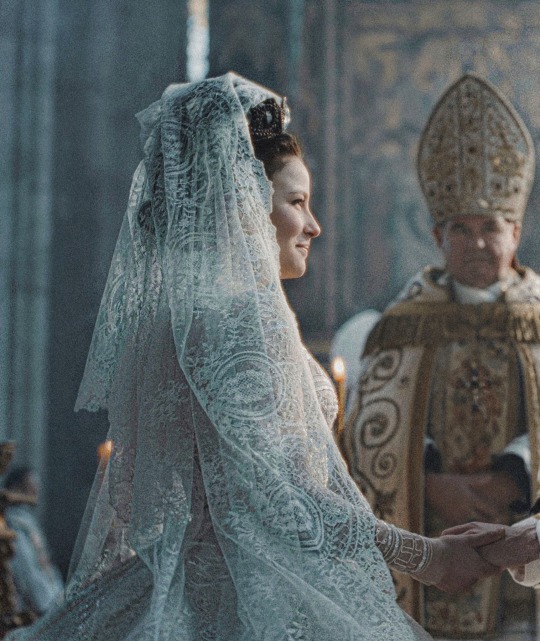
The Empress / Die Kaiserin (2022- )
#source: historical beauty lily#period drama#perioddramaedit#19th century#wedding dress#white dress#devrim lingnau#die kaiserin#kaiserin sissi#empress elisabeth of austria#netflix#edit#austrian empire#sisi#sissi#wedding aesthetic#wedding#princesscore#princess#braids#pastel#aesthetic#1800s aesthetic
90 notes
·
View notes
Text

I'm here to bring you totally true Napoleonic history facts and stupid Simpsons jokes.
#napoleon#napoleon bonaparte#napoleonic era#napoleonic wars#metternich#klemens von metternich#francis i#austrian empire#my art
106 notes
·
View notes
Text

Napoleonic Austrian Cavalry Uniforms
Not much to say, always found it funny their heavy cavalry only had a half front plate because they figured they wouldn’t be hit from back there in a fight. Sure made reforming them simpler after all their loses in the early/mid war.
#history#military art#military#1800s#napoleonic era#napoleonic wars#soldier#cavalry#austrian uniform#austrian history#austrian empire
38 notes
·
View notes
Text
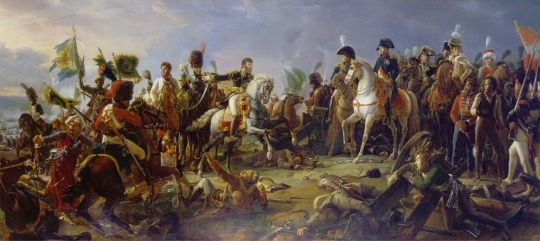
The Battle of Austerlitz, 2nd December 1805 by François Gérard
#battle of austerlitz#art#françois gérard#napoleonic wars#napoleonic#napoleon bonaparte#france#emperor#napoléon#napoleon#emperors#empire#empires#russia#austria#habsburg#holy roman empire#french empire#russian empire#austrian empire#europe#european#history#bonaparte#napoléon bonaparte#french#austrian#russian#battle
157 notes
·
View notes
Text

Emperor Charles VI. (1685-1740) in the Vliesornat
Artist: Jacob van Schuppen (French, 1670-1751)
Date: 1730
Medium: Oil on canvas
Collection: Kunst Historisches Museum Vienna, Austria
Charles VI, Holy Roman Emperor
Charles VI (German: Karl; Latin: Carolus; 1 October 1685 – 20 October 1740) was Holy Roman Emperor and ruler of the Austrian Habsburg monarchy from 1711 until his death, succeeding his elder brother, Joseph I. He unsuccessfully claimed the throne of Spain following the death of his relative, Charles II. In 1708, he married Elisabeth Christine of Brunswick-Wolfenbüttel, by whom he had his four children: Leopold Johann (who died in infancy), Maria Theresa, Maria Anna (Governess of the Austrian Netherlands), and Maria Amalia (who also died in infancy).
#portrait#full length#order of the golden fleece#sitting#royal throne#oil on canvas#artwork#emperor charles vi#house of habsburg#holy roman emperor#austrian history#draped curtains#oil painting#fine art#ornate table#crown#cape#austrian empire#austrian monarchy#painting#french culture#french art#jacob van schuppen#french painter#european art#18th century painting
16 notes
·
View notes
Text
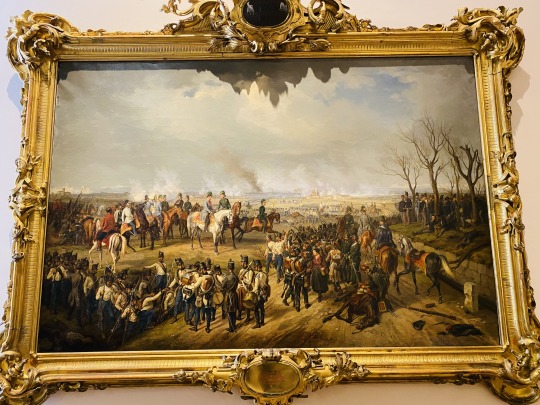



Field Marshal Radetzky and his staff at the Battle of Novara on March 23, 1849, by Albrecht Adam.
52 notes
·
View notes
Text

Franz Joseph I, Emperor of Austria. Unknown artist.
#kaisertum österreich#haus habsburg lothringen#kaiser#Franz Joseph I#Emperor of Austria#austrian empire#magyar királyság#königreich ungarn#kingdom of hungary#house of habsburg lorraine#Österreichisch Ungarische Monarchie#Osztrák Magyar Monarchia#Osztrák-Magyar Monarchia#Österreichisch-Ungarische Monarchie#köngireich böhmen#kingdom of bohemia#royalty#pornstache
2 notes
·
View notes